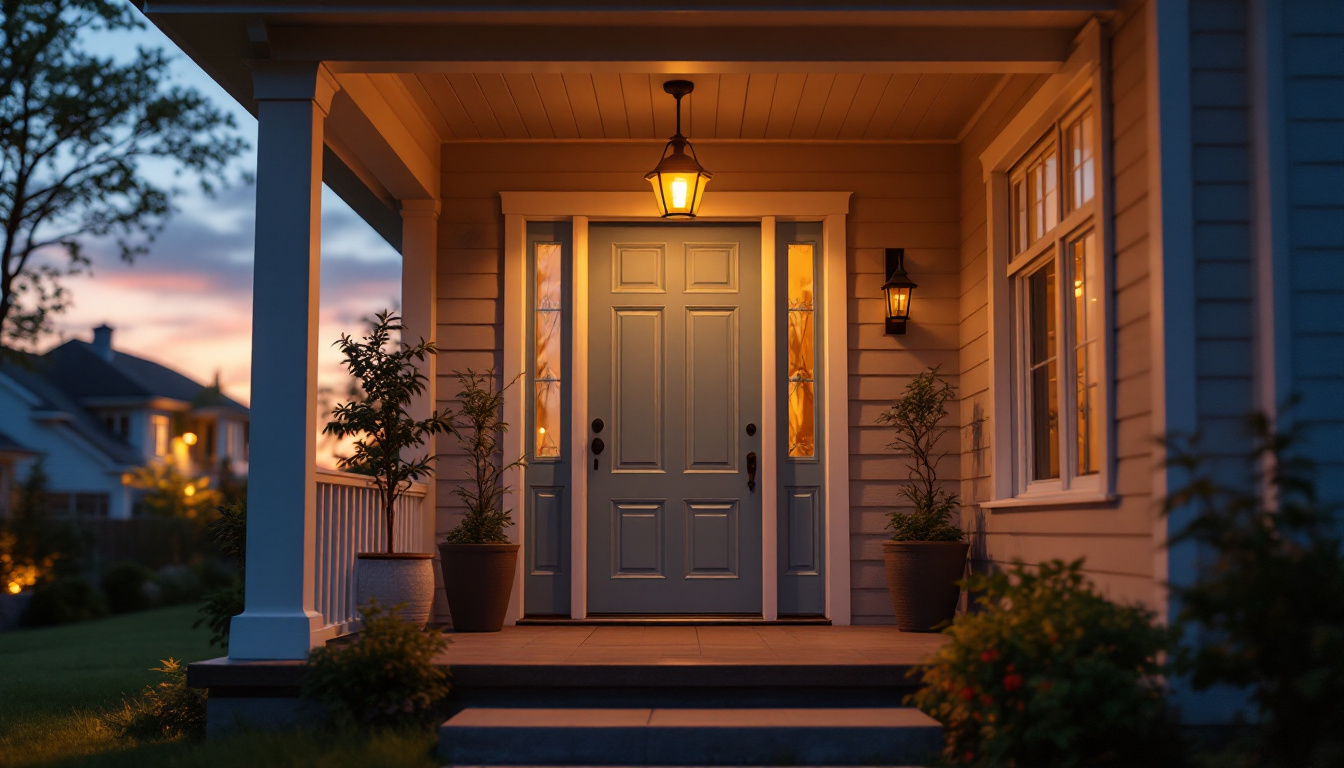
As the lighting industry evolves, many lighting contractors are faced with the decision to transition from traditional fluorescent tubes to more modern LED alternatives. This shift is not just a trend; it represents a significant change in how lighting is perceived, utilized, and maintained. Understanding the pros and cons of changing fluorescent light tubes to LED is essential for contractors looking to provide the best solutions to their clients.
Fluorescent lights have been a staple in commercial and industrial lighting for decades. They operate by passing an electric current through a gas-filled tube, which produces ultraviolet light that excites a phosphor coating inside the tube, emitting visible light. In contrast, LED (Light Emitting Diode) technology works by passing current through a semiconductor, which emits light directly. This fundamental difference in operation leads to various implications for performance, efficiency, and longevity.
One of the most significant advantages of LED lighting is its energy efficiency. LEDs consume considerably less power than fluorescent tubes, often using up to 75% less energy for the same amount of light output. This reduction in energy consumption not only lowers electricity bills but also contributes to a smaller carbon footprint, aligning with sustainability goals that many businesses strive to achieve.
For lighting contractors, promoting energy-efficient solutions can be a strong selling point. Clients are increasingly aware of energy costs and environmental impacts, making the transition to LED an attractive option. When presenting this change, it is beneficial to highlight potential savings over time, which can often justify the initial investment in LED technology. Furthermore, many governments and organizations offer incentives or rebates for switching to energy-efficient lighting, providing an additional financial incentive that can further sweeten the deal for potential clients.
Another compelling reason to switch to LED is their impressive lifespan. While fluorescent tubes typically last around 7,000 to 15,000 hours, LEDs can last up to 50,000 hours or more. This extended lifespan means fewer replacements and reduced maintenance costs, which is particularly advantageous in commercial settings where downtime can be costly.
For contractors, this longevity translates into less frequent service calls and a better reputation for reliability. Clients will appreciate the reduced need for maintenance, which can be a significant factor in their decision-making process. Highlighting the long-term benefits of LED lighting can help contractors build stronger relationships with their clients, fostering trust and repeat business. Additionally, LEDs are more durable and resistant to shock and vibration, making them ideal for environments where traditional lighting might fail more easily. This resilience further enhances the appeal of LED solutions, especially in high-traffic areas or industrial settings where durability is paramount.
Transitioning from fluorescent to LED lighting is not always a straightforward process. While many LED tubes are designed to be compatible with existing fluorescent fixtures, some installations may require modifications or even complete fixture replacements. Understanding the various options available is crucial for contractors to provide accurate guidance to their clients.
Contractors can choose between direct replacement LED tubes and retrofit kits. Direct replacement tubes are designed to fit into existing fluorescent fixtures without any modifications. This option is often the quickest and most cost-effective solution, allowing for a seamless transition.
On the other hand, retrofit kits may involve replacing components within the fixture, such as ballasts or sockets. While this option can provide enhanced performance and efficiency, it may also require more time and labor, impacting overall project costs. Contractors should assess the specific needs of each project and advise clients accordingly, ensuring that they understand the implications of each choice.
One critical factor to consider during the transition is ballast compatibility. Many fluorescent fixtures utilize ballasts to regulate the current flowing to the tubes. Some LED tubes are designed to work with existing ballasts, while others are “ballast bypass” models that require the ballast to be removed. Understanding the existing infrastructure is essential for contractors to avoid potential issues during installation.
Contractors should educate clients about the implications of ballast compatibility, including the potential for additional costs or challenges. Providing this information upfront can help manage expectations and ensure a smoother installation process.
The initial cost of LED lighting can be higher than that of fluorescent options, which may deter some clients. However, a thorough cost analysis can reveal the long-term savings associated with the switch. Lighting contractors should be prepared to present a comprehensive breakdown of costs, highlighting both the upfront investment and the ongoing savings.
When considering the switch to LED, clients will need to factor in the initial costs of purchasing LED tubes or retrofit kits, as well as any potential labor costs associated with installation. While the price of LED technology has decreased significantly in recent years, it is still essential to communicate the value of the investment.
Contractors can help clients understand that although the initial investment may be higher, the long-term savings on energy bills and maintenance can offset these costs over time. Providing case studies or examples of previous projects can help illustrate the financial benefits of switching to LED.
Calculating the return on investment (ROI) is a crucial step in convincing clients of the benefits of LED lighting. By comparing the total costs of fluorescent lighting over its lifespan to those of LED lighting, contractors can provide a clear picture of potential savings. This analysis should include energy savings, maintenance costs, and any applicable rebates or incentives for energy-efficient upgrades.
Many utility companies offer rebates for businesses that switch to energy-efficient lighting, which can further enhance the ROI. Contractors should stay informed about available incentives in their area and be prepared to assist clients in navigating these programs.
As businesses increasingly prioritize sustainability, the environmental impact of lighting choices has become a significant consideration. LED lighting offers several advantages in this regard, making it an appealing option for environmentally conscious clients.
Switching to LED lighting can significantly reduce a business’s carbon footprint. The lower energy consumption associated with LEDs translates to decreased greenhouse gas emissions, contributing to a more sustainable future. For contractors, this aspect can be a powerful selling point, particularly for clients looking to enhance their corporate social responsibility initiatives.
Contractors should be prepared to discuss the environmental benefits of LED lighting, emphasizing how this transition aligns with broader sustainability goals. Providing information on the lifecycle of LED products, including their recyclability, can further strengthen the argument for making the switch.
Fluorescent tubes contain hazardous materials, such as mercury, which require special disposal methods to prevent environmental contamination. In contrast, LED lighting is free from such harmful substances, making it a safer choice for both people and the planet. This reduction in hazardous waste can be an essential consideration for clients concerned about their environmental impact.
Contractors can highlight the waste reduction benefits of LED lighting, reinforcing the idea that this transition not only saves money but also contributes to a healthier environment. This message can resonate strongly with clients who prioritize sustainability in their operations.
While the benefits of switching to LED lighting are substantial, there are also challenges and considerations that contractors should be aware of. Understanding these potential pitfalls can help contractors navigate the transition more effectively and provide better service to their clients.
One challenge that may arise during the transition to LED is the difference in color temperature and quality of light. Fluorescent tubes are available in various color temperatures, and clients may have specific preferences based on their needs. LEDs also come in a range of color temperatures, but the quality of light can vary significantly between products.
Contractors should educate clients about the different options available and help them choose the right color temperature for their specific applications. Providing samples or demonstrations can assist clients in making informed decisions, ensuring they are satisfied with the final result.
Some clients may be hesitant to switch from fluorescent to LED lighting due to a reluctance to change or a lack of understanding of the benefits. Contractors should be prepared to address these concerns with clear, factual information and compelling arguments. Building trust and rapport with clients can help alleviate fears and encourage them to embrace new technologies.
Engaging clients in discussions about their lighting needs and preferences can also help identify potential objections before they become significant barriers. By actively listening and addressing concerns, contractors can foster a collaborative environment that encourages clients to explore the benefits of LED lighting.
Transitioning from fluorescent light tubes to LED lighting presents both opportunities and challenges for lighting contractors. Understanding the benefits, costs, and potential obstacles is essential for guiding clients through this process. By emphasizing energy efficiency, longevity, and environmental impact, contractors can position themselves as trusted advisors in the lighting industry.
As the demand for sustainable and efficient lighting solutions continues to grow, contractors who embrace the shift to LED technology will be well-positioned to meet the needs of their clients. By providing comprehensive information, addressing concerns, and offering tailored solutions, lighting contractors can successfully navigate the transition and foster long-lasting relationships with their clients.
Ready to lead your clients into a brighter, more sustainable future with LED lighting? At LumenWholesale, we’re committed to equipping you with the highest quality, spec-grade LED products at unbeatable wholesale prices. Say goodbye to local distributor markups and hello to a vast selection of reliable lighting solutions that meet the highest industry standards. Plus, with free shipping on bulk orders, you can stock up on premium lighting without any hidden fees. Make the smart switch to LED and experience the perfect blend of quality, affordability, and convenience. Take the first step towards a successful transition and explore our wholesale lighting options at the best value today.

Discover expert insights and top resources from lighting contractors to master the art of front porch illumination.

Discover the essential checklist for lighting contractors focusing on movement light switches.

Discover the essential techniques and insider tips for mastering 3-way switch installations with our comprehensive guide tailored for lighting contractors.

Discover the comprehensive guide to Gama Sonic solar lights tailored for lighting contractors.